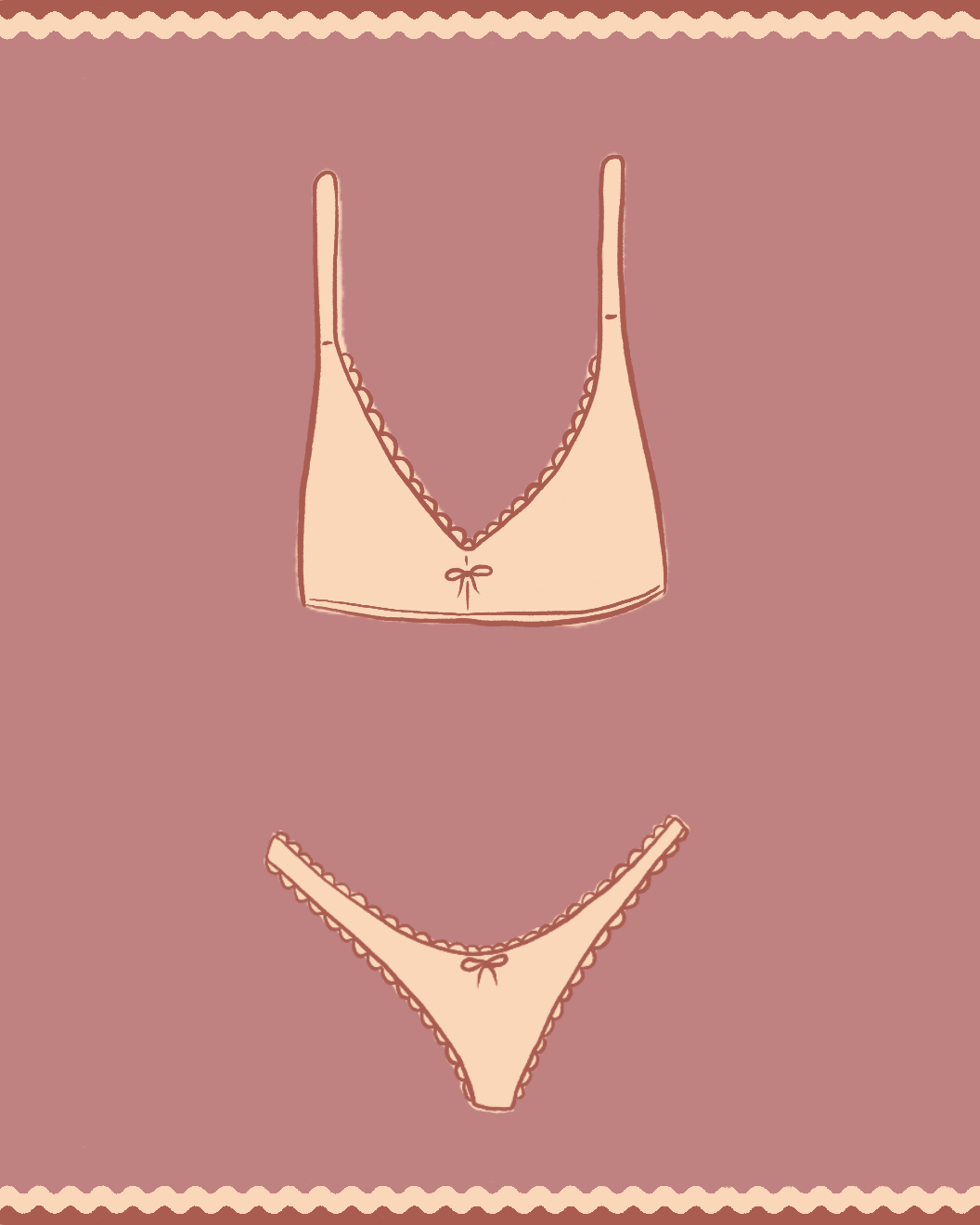From corsets to Calvin Klein.
In the realm of sartorial expression, lingerie can feel a bit oxymoronic. For one, it’s typically designed to live under your clothes…which feels contradictory to the whole project of fashion (fashions without exhibitionism??!). Moreover, in practice, we often put it on expressly to…take off. Sure, technically you also take off any number of garments throughout the day, but it’s safe to say the only “outfit” you don specifically for removal is, well, lingerie.
That said, undergarments haven’t always been a free-spirited alcove of the sartorial world. When we think back to our earliest “intimates,” they often come in the form of stiff, waist-shaping corsets (torture devices, if you will). So, how did we go from strapping ourselves into cloth prisons to delighting in the breeze that comes along with a good ‘ole pair of crotchless panties? Here’s a brief look at the history of lingerie.
The 1700s & 1800s: Corsets
For much of the 18th century, your classic corset reigned supreme. And the earliest version often referred to as a “stay,” was crafted not with stiff cloth, but with whalebone—which meant breathing was simply out of the question. And while these garments did their due diligence in streamlining the waist, they were hardly sexy. They more accurately resembled armor than they did the corsets of today.
By the time the 1800s came around, then, we were still strapping women needlessly into these pseudo straight jackets—but they’d gotten marginally sexier. In addition to a generally skimpier silhouette, these were also designed to straighten the back and lift the breasts, and they came in any number of luxury, ornate fabrics.
The 1910s: Drawers & Nightgowns
It’s hard not to read “drawers” as the butt of a joke (ha!). But the fairly rotund underwear forebearers were indeed central to the lingerie scene in the early 20th century. In fact, before drawers—which were close-crotched—came about, many women wore open-crotched panties. Not for salacious purposes, though—merely because close-crotched undergarments were reserved for men. That said, these were among the first bottom garments designed to be seen.
From a more delicate end, though, this was also around the time when the bridal nightgown came into play. And these items were something to behold: Sheer, stunning, draping silhouettes designed to showcase (while masking) the female body.
The 1920s: Slips
While we’re all more than familiar with the contemporary slip dress, the introduction of slips as undergarments in the ‘20s certainly signified a move towards sexual liberation. When the fashion of the era gave way to flapper dresses rather than ball gowns, a more boyish natural figure went into style—which meant we could do away with the whole corset deal in favor of a far more comfortable silhouette.
The 1950s: Pin-ups & La Perla
The ‘50s saw the emergence of pin-up advertisements: Suggestive models in sultry poses dressed in beautifully rendered undergarments that were meant to be seen. These ads, which appealed to both men and women, marked the first time undergarments could be properly celebrated—and shopped for—openly.
Fortunately, 1954 also marked the arrival of La Perla—a luxury lingerie brand that has long been known for melding the sophisticated and the salacious. As a high-end brand that treated undergarments like jewelry, it added a new level of class to the lingerie market.
The 1970s: Victoria’s Secret
In the wake of La Perla, 1977 saw the arrival of Victoria’s Secret—a more affordable, accessible lingerie option. Roy Raymond, the company’s founder, claimed he hated the process of shopping for lingerie in department stores. He wanted an option that was neither dowdy nor reserved for special occasions like, say, your wedding night. Call it the people’s lingerie.
The 1980s: Brights & Boas
Like with all things in the ‘80s, this particular decade gave way to some newfound maximalism in the lingerie department. In line with the fashion of the era, we began to see bright colors, louder textiles, and most importantly, lots of feathers.
The 1990s: Underwear, But Make It Fashion
While lingerie-for-show had certainly been normalized by the ‘90s, this was the first time we saw undergarments donned as proper fashion. Beginning with Madonna’s iconic Jean-Paul Gautier conical top, we began to see slip-dresses on runways and at movie premieres that were intentionally sheer to reveal undergarments (think: Kate Moss).
This was also the decade in which the famed “wonderbra” came into style—among the first, widely popularized push-up bras—giving way to a whole new era of fashion that prized lifted, perky breasts more than ever before. Oh, and unsurprisingly, this was also when our first class of Victoria’s Secret angels was crowned, both editorially and on the runway.
The 2000s: G-Strings, Baby
It’s not that thongs didn’t exist before the early aughts, but rather, this was the first time the ‘old G-string was made decidedly glamorous. Which is to say, along with the emergence of low-rise jeans, you were certainly seeing a hell of a lot of above-the-hip, whale-tail thong action.
The 2010s: Bodycon
Welcome to Kardashian territory! By the time Kim K. had risen to prominence, her signature shapewear-esque garments had followed suit. Synched waists with skin-tight, revealing dresses were simply the look—whether or not your donned other garments on top.
2020-Present: Sporty Sets
Even pre-quarantine, a more comfortable iteration of lingerie had come into style. And yes, we’re thinking specifically of those Calvin Klein matching sets. But here’s the exciting thing: In the grand history of lingerie, this is arguably the first time we’ve praised comfort and ease in the “intimates” realm without discounting sex appeal. As it turns out, the whole sporty spice look is still a serious turn-on.
##
maude and Latina are working together to inform and educate Latinx communities on sexual wellness and health. Founded by Eva Goicochea, maude is a modern sexual wellness company built on quality, simplicity and inclusivity, on a mission to make intimacy better—for all people.









